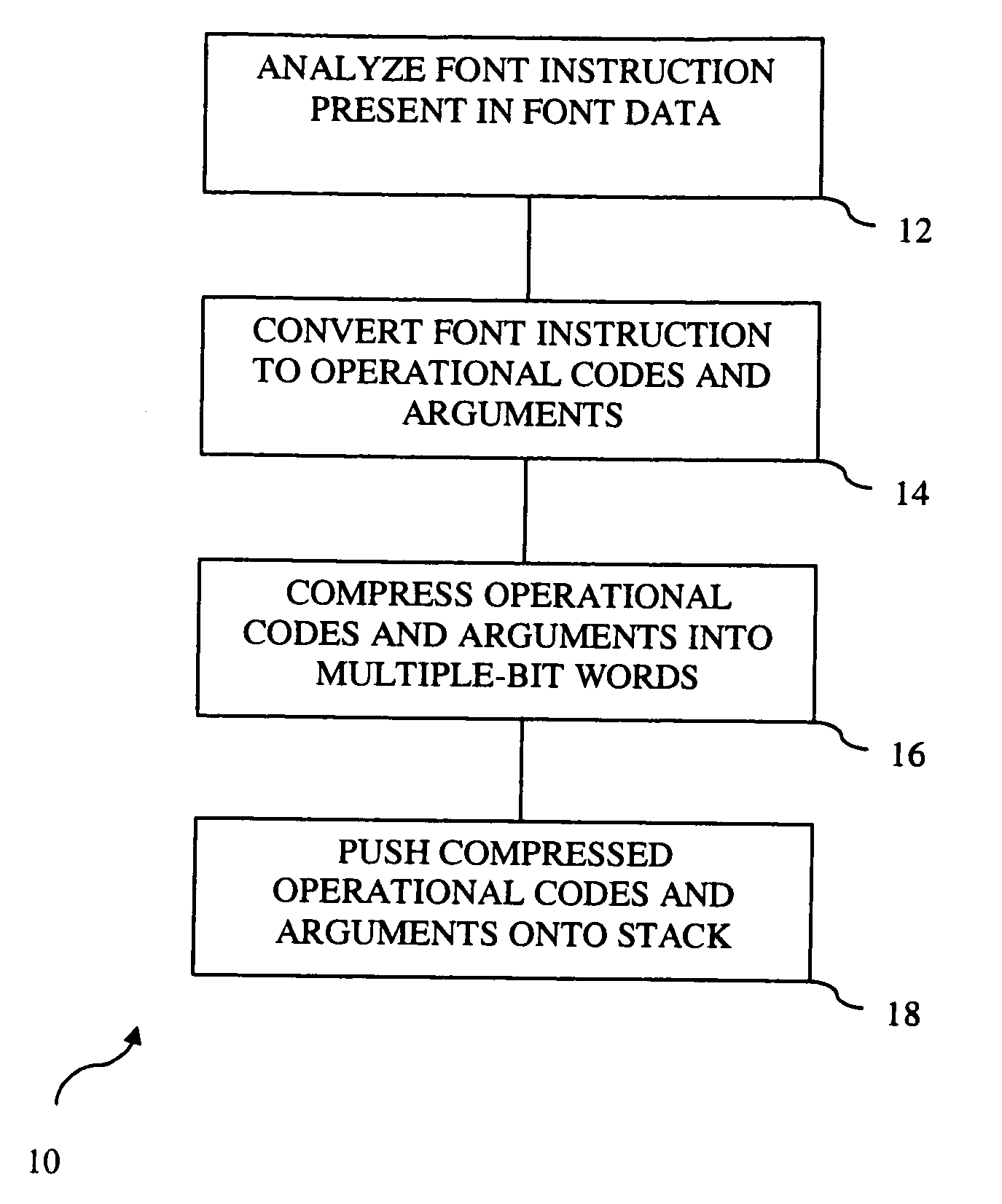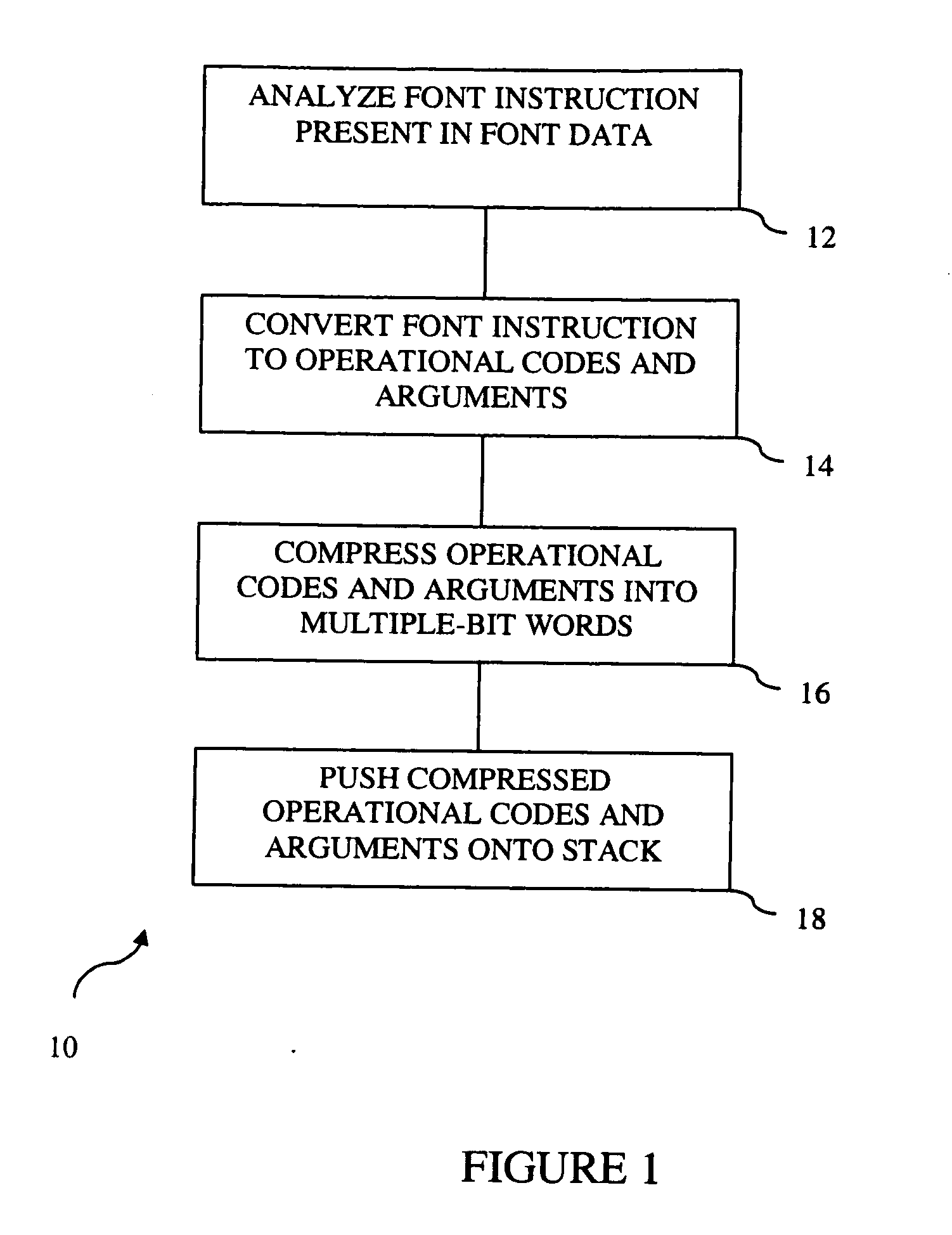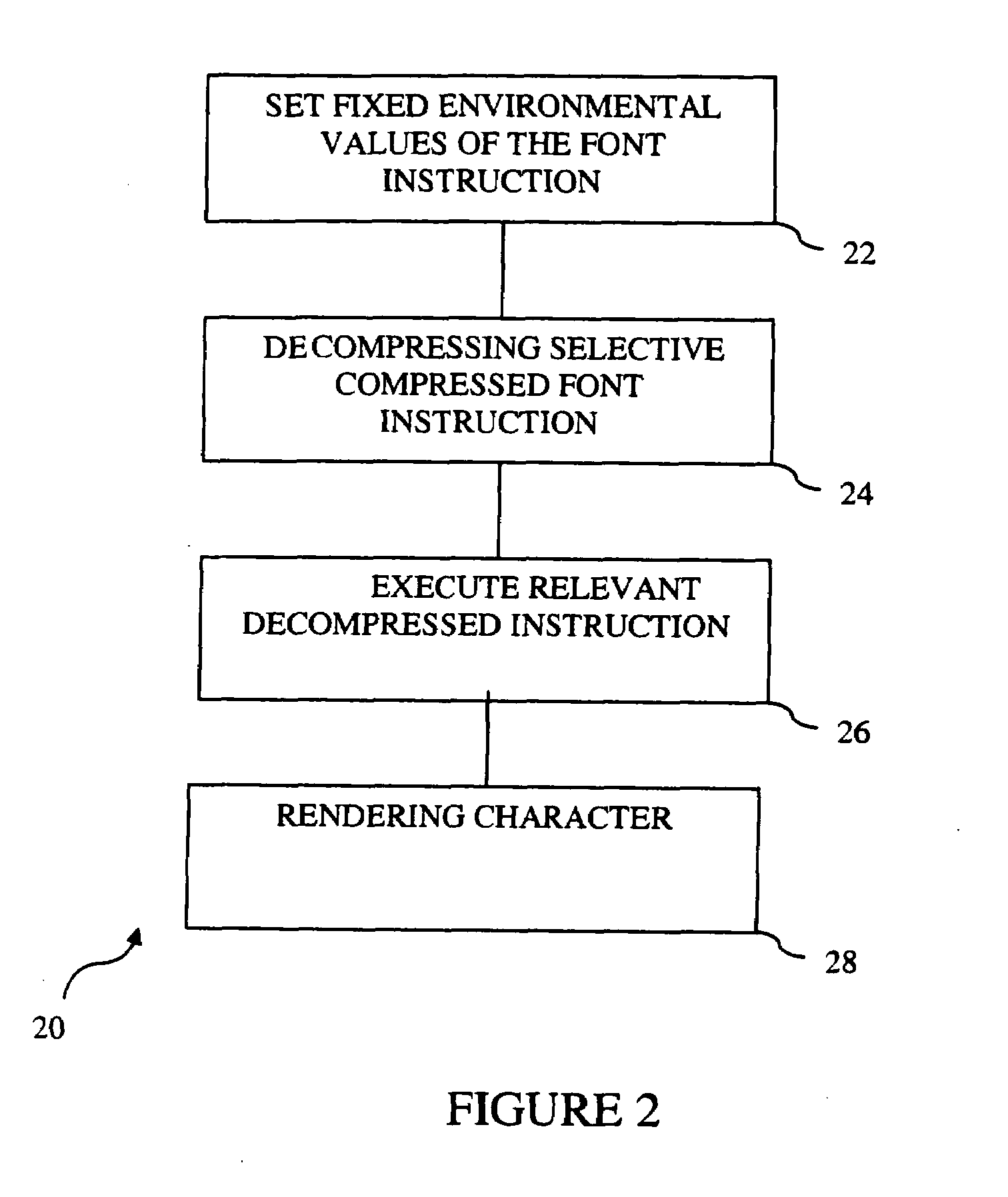Method for reducing size and increasing speed for font generation of instructions
a font instruction and instruction technology, applied in the field of processing font instruction data, can solve the problems of consuming a huge amount of computer power and time for displaying characters, affecting the quality of fonts, and affecting the effect of font generation speed, so as to achieve the effect of reducing size and increasing the speed of font generation
- Summary
- Abstract
- Description
- Claims
- Application Information
AI Technical Summary
Benefits of technology
Problems solved by technology
Method used
Image
Examples
Embodiment Construction
[0022]Referring now to the Figures and, in particular, FIG. 1, font instruction compression method 10 represents a method for analyzing font instruction contained in its native or original form and for generating a compressed representation of the font instruction which is subsequently associated with the font data. At step 12, font instruction is analyzed for hinting script or code, which is used when rendering a specific glyph present in the font data set. The font instruction can be PUSHB, PUSHW, NPUSHB, NPUSHW, SVTC (both X and Y), SDB, SDS, DELTAP1, DELTAP2 and DELTAP3 of TrueType fonts. Alternatively, the font instruction relating to glyph rendering can be any instruction which relates to point or bitmap manipulation of a glyph during rasterization. Typically, the font instruction will be in the form of one-byte codes which represent instruction for manipulating various control points of a respective glyph outline prior to rasterization.
[0023]At step 14, the identified font in...
PUM
 Login to View More
Login to View More Abstract
Description
Claims
Application Information
 Login to View More
Login to View More - R&D
- Intellectual Property
- Life Sciences
- Materials
- Tech Scout
- Unparalleled Data Quality
- Higher Quality Content
- 60% Fewer Hallucinations
Browse by: Latest US Patents, China's latest patents, Technical Efficacy Thesaurus, Application Domain, Technology Topic, Popular Technical Reports.
© 2025 PatSnap. All rights reserved.Legal|Privacy policy|Modern Slavery Act Transparency Statement|Sitemap|About US| Contact US: help@patsnap.com



